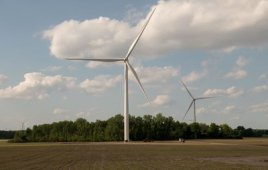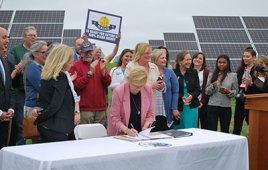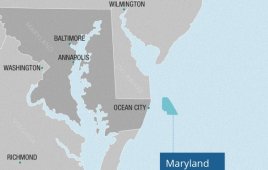With larger, more powerful turbines coming online, requirements for pitch control are increasing. Experts say the wind-power industry is also beginning to adopt aerospace test technology, the same kind used to vet airplane designs, to simulate loads on wind turbine blades before installation.
Pitch control is a key safety system in turbines. Ray Opie, senior project engineer at Moog, says their customers are looking to refine overall design of turbine for optimized cost and availability. “They want to increase the hours of the day the turbine runs, thereby producing more power and achieving better cost-effectiveness,” he says. “Also, lower costs are making things thinner and more slender, which means the pitch system is more dynamic.”
Opie says the industry is also starting to look at the methodology used elsewhere with reliability assistance. Reliability is especially important in wind turbines. “Like aircrafts, the thing can’t go wrong,” he says. “They must always do what they need to do. There are many tools from other industries to determine reliability in wind.” Electric pitch actuators often consist of a gearbox and either an ac or dc motor. To further optimize reliability, Moog offers the gearbox and motor as a package, instead of having to purchase them separately from different manufacturers.
Furthermore, Greg Schulte, president of Bonfiglioli, says industry attention is on nacelle weight reduction, reduced maintenance, and faster installation. “This has inspired our company to design a compact line of multistage, planetary gear motors for yaw control that comprise all these features,” he says. The motors are more compact, 8% lighter, and have 11% less parts, which simplifies maintenance with longer service periods. Opie says Moog is also focusing on component enhancements to offer the simplest, most reliable product.
Moog also sees wind-power experts adopting technology from the aerospace industry for blade-testing solutions. “Our division within Moog specializes in structural testing for the aerospace industry,” says Stuart Bibb, market manager for Moog Test Systems. “Using computer-controlled hydraulic technology, we are able to simulate service loads to ascertain structural strength prior to initial flight testing.”
According to Bibb, to accelerate the development of new blade designs, some blade testing facilities are adopting fatigue testing of wind turbine blades using hydraulic technology that moves the blade at specific frequencies and evaluates the blades’ resistance to different loads. The technology is not unlike fatigue systems used to simulate flight hours on a plane’s wings prior to air tests. Moog says it is a sign that the wind-power industry has become technologically more sophisticated. WPE
Filed Under: Uncategorized




